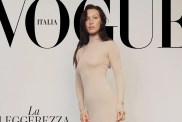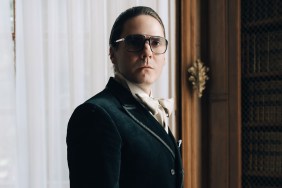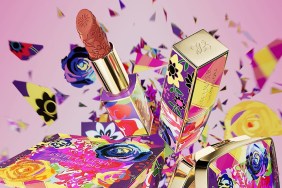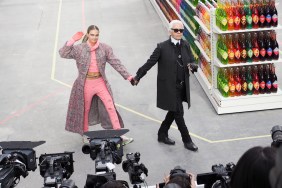
Laird Borrelli is clearly smitten with fashion illustration. Her first two books, “Fashion Illustration Now” and “Fashion Illustration Next” were paeans to the work of graphic artists such as Mats Gustafson, Jeffrey Fulvimari, Ruben Toledo, Julie Verhoeven, Mode 2, Koji Iwashi and Maren Esdar, among others.
Her new book, “Fashion Illustration by Fashion Designers” (Chronicle Books, $40), continues the tradition by paying visual salute to the drawings of 50 international designers, from established couturiers Christian Lacroix, Karl Lagerfeld and Yves Saint Laurent to emerging talents such as Phillip Lim, Costello Tagliapietra, Christopher Kane, Giles Deacon, Riccardo Tisci, Alexander Terekhov and Doo-Ri Chung.
“I can’t draw, but to me, looking at a photo is more like reading prose, whereas an illustration is more like fiction,” Borrelli, a fashion historian and senior fashion editor at style.com, told The Fashion Informer last week. “I always think of them sort of like children’s books for grownups because they kind of tell the story in a different way. I love that fantasy element and getting a window into how someone’s imagination works.”
Indeed, looking at Phillip Lim’s spare headless ink on paper line drawings, Aitor Throup’s colorful punky characters, Badgley Mischka’s bejeweled glam goddess sketches, Rodarte’s whimsical colored pencil and ink maidens and Bruno Frisoni’s modern impressionistic babes – rendered in marker pen and colored pencils in a way that suggests his gals are ready for action, even while at rest – offers a fascinating peek at the origins of these designer’s creative process and a little bit of insight into their personality.


Sonia Rykiel, for instance, sketches in a manner that reflects the boldness (or “Gallic insouciance,” as Borrelli aptly puts it) of her finished creations, while Stephen Burrows opts for more realistic crayon and mixed media renderings designed to “capture the mood and posture” of the collection he’s working on. Tuleh’s Bryan Bradley scrawls little notes (“For life, love, sex & fashion…”) in the margins of his elegant illustrations, which recall the wink-wink knowingness of his fashions. Walter Van Beirendonck’s beefy boys, sketched in bright yellow leggings or buffalo check pants using ink and colored pens, resemble the Belgian designer himself. Zang Toi, meanwhile, uses a black roller on white paper and methodically sketches “over and over again” until the drawing is an exact replica of the ensemble he’s envisioned in his imagination. And Molly Grad’s subversively sexy, doll-like characters (some fully realized watercolors, others rendered as an ink on paper x-ray of skeletal tendon and bone) are as otherworldly as the folded, knotted and pleated “demi-couture” collection she debuted upon graduating from London’s Central St. Martins.


Unlike the professional illustrators Borrelli featured in her previous books, who are given a specific assignment (“We need you to illustrate a beauty image or looks from Gaultier’s latest collection”), a designer’s illustrations are, for the most part, a private enterprise not intended for public viewing – which, for a fashion fan, makes seeing them all the more thrilling.
“A fashion illustration by a professional illustrator is usually editorializing something that already exists,” explains Borrelli. “But these drawings generally are a starting point for something.
And the designers seem to be divided almost equally in half [about their process], like Christian Lacroix, who told me something he drew as a bathing suit ended up as a baroque wedding dress, whereas Roksanda Ilincic says she feels like her garment’s successful when it looks exactly like the drawing. So for one, the drawing is a basic starting point, while other people use their illustrations as maps.”

In fact, it’s Borrelli’s attempt to capture something of each designer’s creative process – along with the diverse nature of the drawings themselves (some of which were culled from well-organized archives, others yanked down from the designer’s inspiration board and sent with fabric swatches attached, still others discovered beneath piles of books or magazines in the corner of a designer’s studio) – that makes “Fashion Illustration by Fashion Designers” such a fun, compelling read.
And according to Borrelli, this may very well be the first in a series. “Of course, as soon as you finish a book, you find something amazing,” says the author with a chuckle. “Like, I got Celia Birtwell to agree to do it but it was too late to include her. That was so frustrating. But its just impetus to start collecting for a new one.”
We’ll be waiting…
Photos + Article courtesy of:
www.thefashioninformer.com







